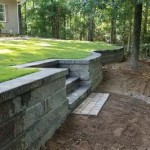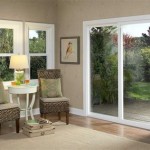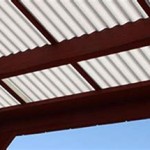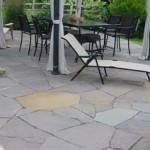Cost To Turn Covered Patio Into Sunroom: A Comprehensive Guide
Converting a covered patio into a sunroom is a popular home improvement project that can significantly enhance a property's value and livable space. A sunroom offers a bright, comfortable environment for relaxation, entertainment, and even plant cultivation. However, before embarking on this transformation, it is crucial to understand the various costs involved. The overall expense can vary widely depending on factors such as the size of the patio, the desired features of the sunroom, the quality of materials used, and local labor rates. This article provides a comprehensive overview of the cost considerations associated with turning a covered patio into a sunroom.
The initial assessment of the existing covered patio is paramount. Factors to consider include the structural integrity of the patio, the type of existing roof (if any), the presence of a concrete slab or foundation, and the overall layout of the patio in relation to the house. These initial conditions will directly influence the scope of work required and, consequently, the overall cost. A patio lacking a solid foundation, for example, will require additional expenditure to build a suitable base for the sunroom walls. Likewise, an existing roof that is not structurally sound or aesthetically pleasing may need replacement or significant modification.
Key Cost Factors: Materials
The selection of materials is a primary driver of the overall cost of converting a covered patio into a sunroom. Choices range from basic, budget-friendly options to high-end, luxury materials, each with its own price point and aesthetic appeal. The materials required generally include framing materials, windows, doors, roofing materials, flooring, insulation, and interior finishing elements.
Framing materials, typically wood or aluminum, provide the structural support for the sunroom. Wood framing is often more affordable upfront, but it may require more maintenance over time due to its susceptibility to moisture and insect damage. Aluminum framing, while generally more expensive, is more durable and resistant to the elements. The specific type and grade of wood or aluminum will also impact the cost.
Windows are a significant cost component, and the choice of window type and quality can greatly influence the overall aesthetic and energy efficiency of the sunroom. Options include single-pane, double-pane, and triple-pane windows, each offering varying levels of insulation. Low-E coatings and argon gas fills can further enhance energy efficiency but will also increase the cost. Window styles, such as sliding, casement, or fixed windows, also have different price points. Higher-end windows, often incorporating features like impact resistance or specialized tints, will contribute to a higher overall project cost.
Doors, similar to windows, are available in a range of styles and materials. Sliding glass doors are a common choice for sunrooms, providing easy access to the outdoors and ample natural light. French doors offer a more traditional aesthetic, while storm doors can add an extra layer of insulation and security. The cost of doors will depend on the material (e.g., vinyl, wood, aluminum), the glazing type, and any special features such as multi-point locking systems.
Roofing materials for a sunroom should be durable, weather-resistant, and aesthetically compatible with the existing house. Options include asphalt shingles, metal roofing, tile, and translucent or transparent materials like polycarbonate or glass. Asphalt shingles are generally the most affordable option, while metal roofing and tile offer greater longevity and aesthetic appeal but come at a higher cost. Translucent roofing materials can maximize natural light but may require additional insulation to regulate temperature.
Flooring options for a sunroom should be durable, comfortable, and easy to maintain. Popular choices include tile, hardwood, laminate, and carpet. Tile is a durable and water-resistant option that is well-suited for sunrooms, but it can be cold underfoot. Hardwood offers a warm and inviting look but may require more maintenance in a sunroom environment prone to moisture. Laminate is a more affordable alternative to hardwood, while carpet provides a soft and comfortable surface but may be susceptible to stains and fading.
Insulation is crucial for maintaining a comfortable temperature in the sunroom and reducing energy costs. Options include fiberglass batts, spray foam, and rigid foam board. Spray foam insulation offers superior insulation value and can seal air leaks effectively, but it is also the most expensive option. The choice of insulation will depend on the climate, the desired level of energy efficiency, and the budget.
Interior finishing elements, such as drywall, paint, trim, and lighting fixtures, contribute to the overall aesthetic and functionality of the sunroom. The cost of these elements will depend on the desired level of detail and the quality of materials used. Custom trim work, specialized paint finishes, and designer lighting fixtures will increase the overall project cost.
Key Cost Factors: Labor and Permits
Labor costs constitute a significant portion of the overall expense of converting a covered patio into a sunroom. The cost of labor will depend on the complexity of the project, the local labor rates, and the experience and expertise of the contractors involved. It is essential to obtain multiple quotes from qualified contractors and to carefully review their proposals. A reputable contractor should be licensed, insured, and bonded, and should provide a detailed breakdown of the labor costs involved.
The specific tasks involved in the labor component can include demolition of existing structures (if necessary), framing, window and door installation, roofing, flooring, electrical wiring, plumbing (if applicable), insulation, drywall installation, painting, and trim work. Projects that require significant structural modifications or involve complex electrical or plumbing work will typically incur higher labor costs.
Obtaining the necessary permits is an essential but often overlooked aspect of the project. Most municipalities require building permits for any significant construction project, including converting a covered patio into a sunroom. The cost of permits can vary depending on the location and the scope of the project. Failure to obtain the required permits can result in fines, delays, and even the forced removal of the unauthorized structure. It is advisable to consult with the local building department to determine the specific permit requirements and associated fees.
The permit process typically involves submitting detailed plans and specifications for the project, which may require the services of an architect or engineer. The cost of architectural or engineering services can add to the overall project expense but can also ensure that the sunroom is structurally sound and complies with all applicable building codes. The complexity of the plans and the level of detail required will influence the cost of these professional services.
Key Cost Factors: Design and Features
The design and features of the sunroom can greatly impact the overall cost. Simple, straightforward designs are generally more affordable than complex, custom designs. The size of the sunroom is a primary determinant of cost, as larger sunrooms require more materials and labor. The addition of specialized features, such as a fireplace, wet bar, or integrated sound system, will also increase the project expense.
The type of sunroom being constructed also influences the cost. A three-season sunroom, designed for use during the spring, summer, and fall, is typically less expensive than a four-season sunroom, which is designed for year-round use. This is because a four-season sunroom requires more robust insulation, heating, and cooling systems to maintain a comfortable temperature throughout the year.
Heating and cooling systems for the sunroom can range from simple space heaters and window air conditioners to more sophisticated options such as ductless mini-split systems or radiant floor heating. The choice of heating and cooling system will depend on the climate, the desired level of comfort, and the budget. Ductless mini-split systems are a popular choice for sunrooms, offering both heating and cooling capabilities in a compact and energy-efficient package. Radiant floor heating provides a comfortable and even heat distribution but is more expensive to install.
Electrical wiring and lighting are essential for the functionality and ambiance of the sunroom. The cost of electrical work will depend on the number of outlets, lighting fixtures, and other electrical devices being installed. Recessed lighting, pendant lights, and wall sconces are popular choices for sunrooms, providing both ambient and task lighting.
Plumbing may be required if the sunroom includes a wet bar, sink, or other water-using fixtures. The cost of plumbing work will depend on the complexity of the plumbing system and the distance to the nearest water and drain lines. Hiring a licensed plumber is essential to ensure that the plumbing work is done correctly and complies with all applicable codes.
The addition of amenities such as a ceiling fan, window treatments, or outdoor furniture can further enhance the comfort and functionality of the sunroom. These items are typically not included in the initial construction cost and should be factored into the overall budget.
In summary, the cost to turn a covered patio into a sunroom is a multifaceted calculation influenced by material choices, labor costs, permit requirements, and the desired features and design. Careful planning and budgeting are crucial to ensuring a successful and cost-effective project.

How Do I Convert A Patio To Sunroom Strong Build

Sunroom Addition Cost To Build Fixr

Converting Our Screened Porch To A Sunroom

Converting A Sunroom Into Back Porch Young House Love

Convert A Screened Porch To Sunroom Lifestyle Remodeling

Convert Patio To Sunroom Cost How Process
Pre Planning Converting Screened Porch Into Sunroom Diy Home Improvement Forum

Converting A Deck Into Sunroom Enclosed Patio Ideas

Reasons To Convert A Screened Porch Sunroom

Converting A Sunroom Into Back Porch Young House Love
Related Posts








